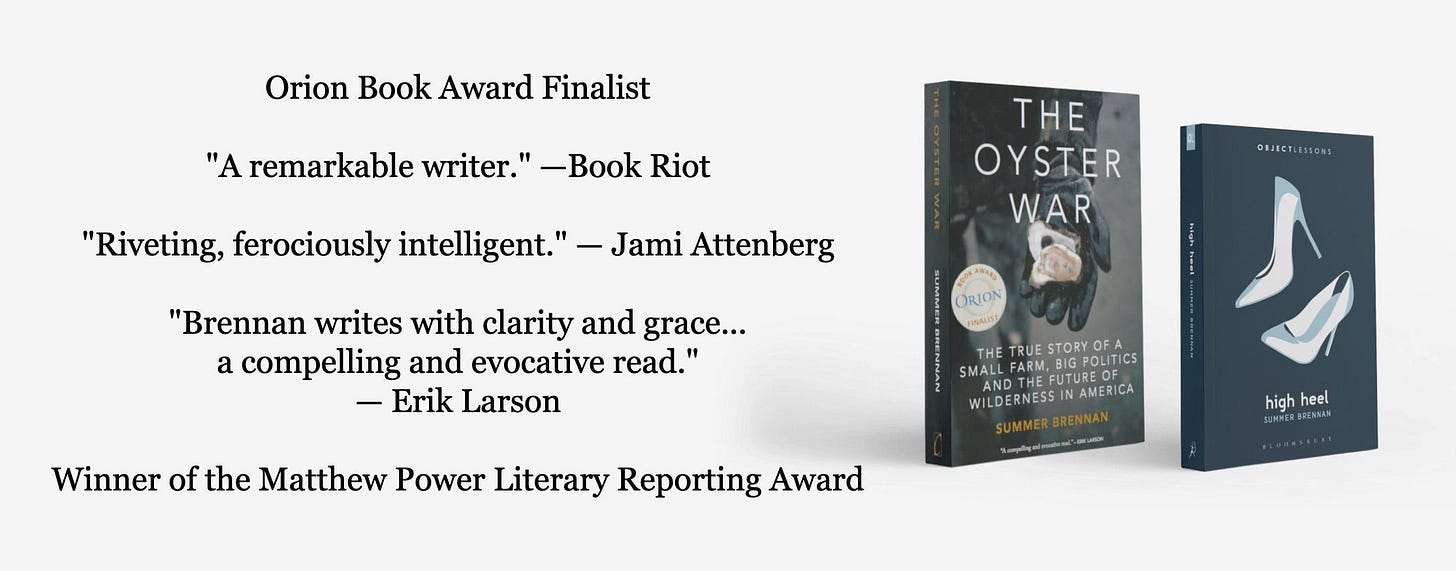And All That Remained Was Her Beauty
I am profoundly moved and honored to have an essay of mine included in an art exhibition.
I wanted to share this news, because it means a lot to me, especially as a person with a background in fine arts, but also because I wanted to illustrate—ahead of Essay Camp no less—that you never know where an essay you write might end up!
An excerpt from my book High Heel was exhibited this fall at the University of Connecticut Contemporary Art Galleries, as part of the entry text to the show And All That Remained Was Her Beauty, curated by Macushla Robinson. You can see Robinson giving a tour of the exhibition here. It is from the section of the book on Ovid, beauty, and sexual violence called Daphne in Flight, Daphne in Flower.

I love that Robinson was inspired by my work in the process of creating the show, and extremely moved that she then chose to physically include the essay, almost as one of the artworks. Her scan of the work becomes a kind of artwork in itself that includes a representation of the text.
I love the tactility of the scan with her hands visible in the background, and the eerie sensation it evokes in me, the author, to think about that felt experience of someone holding my book and reading its words, of feeling something of what I felt when I wrote that passage. Those hands in the dark also remind me of depictions of Daphne herself, as her fingers began to sprout leaves. She’s just holding the book over the scanner, but the refracted reference is meaningful to me. Instead of sprouting leaves, which silenced Daphne in the end, her hands are sprouting words.
Although I haven’t really talked about this much, High Heel is largely a book of vignette essays that form a broader thesis, so I love how a page spread from the book is presented as a literal vignette complete with darkened borders. The whole book, which is about 34,000 words long, is an extended essay itself, but also functions as a series of 150 smaller vignettes, like a collection.
I don’t hear people talk about vignette essays very often; they’re more likley to be called “fragments.” But the vignette literary essay form goes back to Hemingway’s In Our Time and beyond. Since essays are often themselves a very fragmented form, woven and braided and curated, there is certainly some overlap, but I do think the vignette essay is distinct.
I wasn’t thinking about Hemingway or about vignettes when I wrote High Heel, but ended up gravitating to a version of the form. It is probably the form that most interests me at the moment when working artistically.
That’s enough from me. Thanks for reading, and I’ll see you next week at Essay Camp!
Enjoy my writing and want to support it? Become a paid subscriber today. You’ll get full access to craft talks, essays, notebook entries, sketchbook pages, and the popular semiannual write-along workshop Essay Camp. You can also buy my books The Oyster War and High Heel, “like” my posts by tapping the heart icon, share them on Substack Notes or other social media, and/or send them to a friend.







Ugh, sorry for typos in the original email! It's still early here 😩
Congrats. Very awesome. And thanks for the description of the vignette essay ... I plan to learn more!